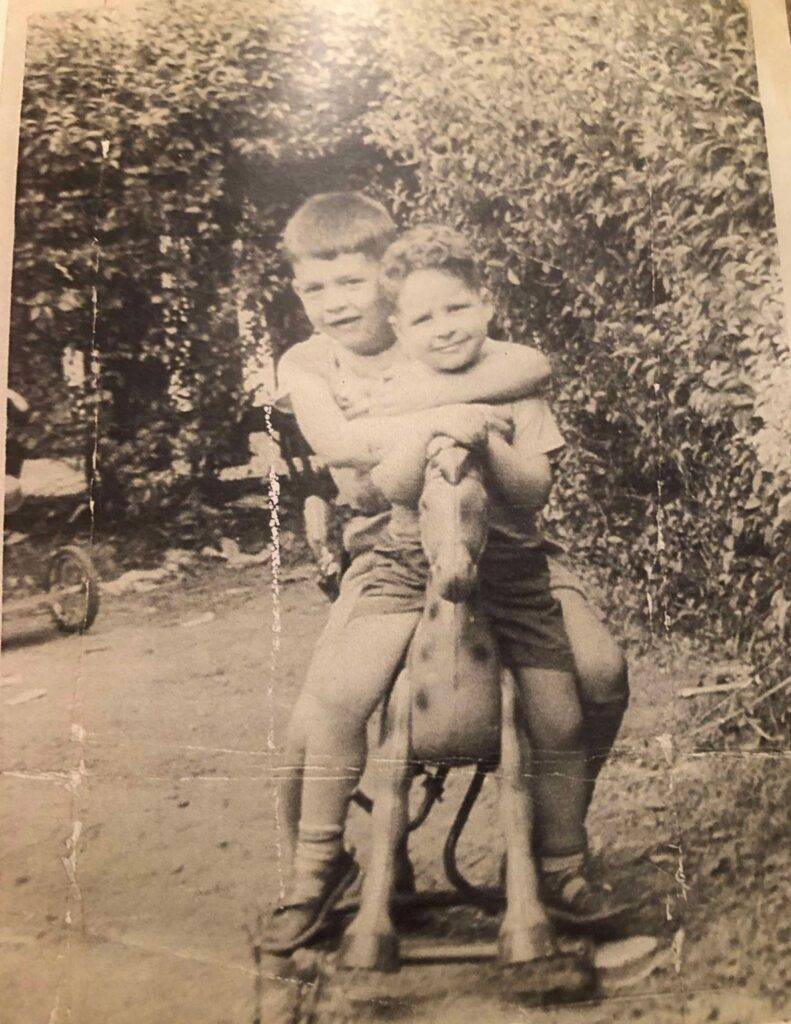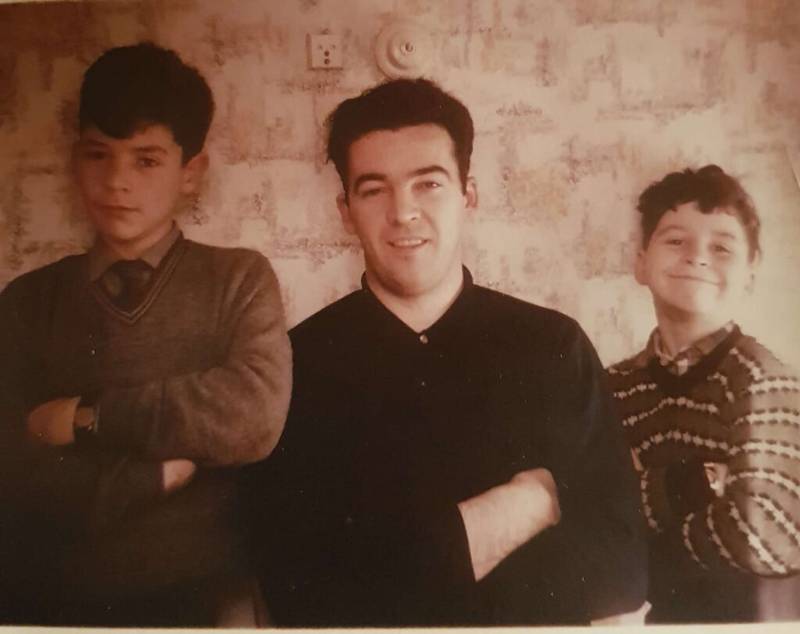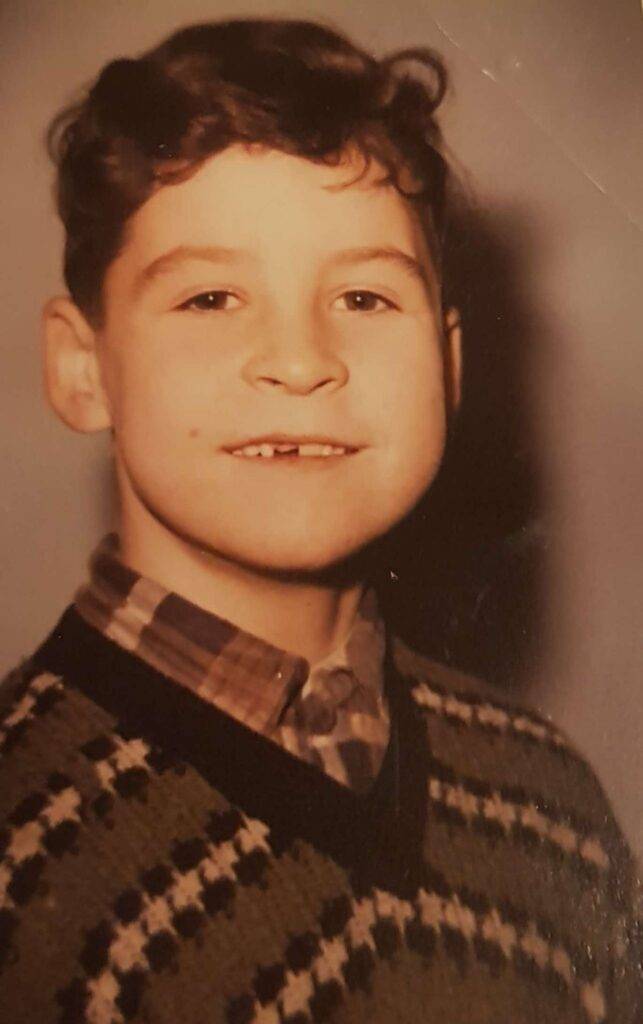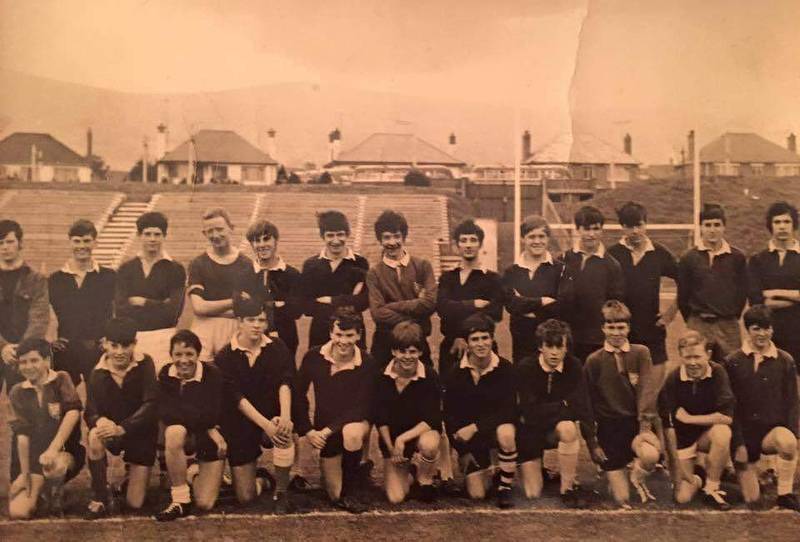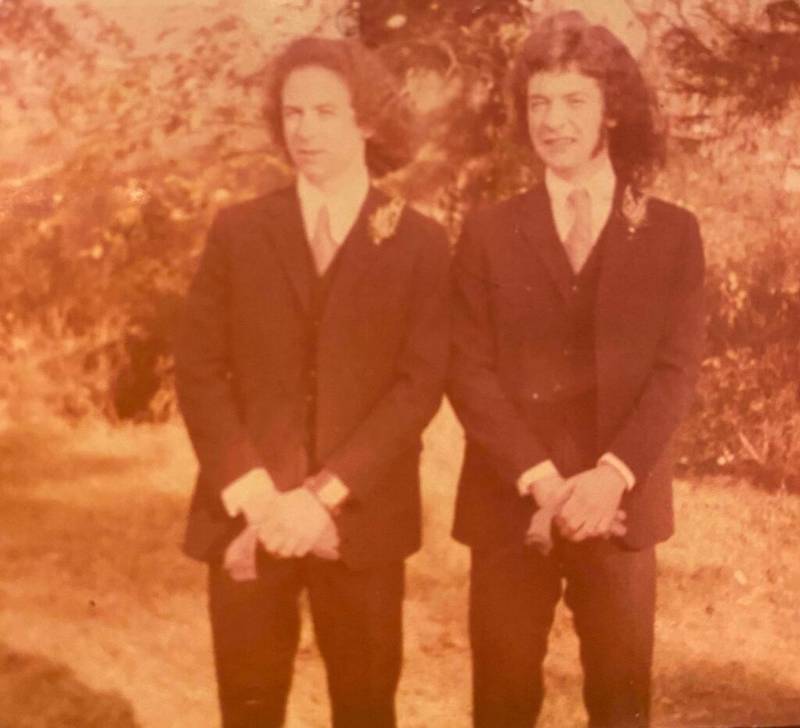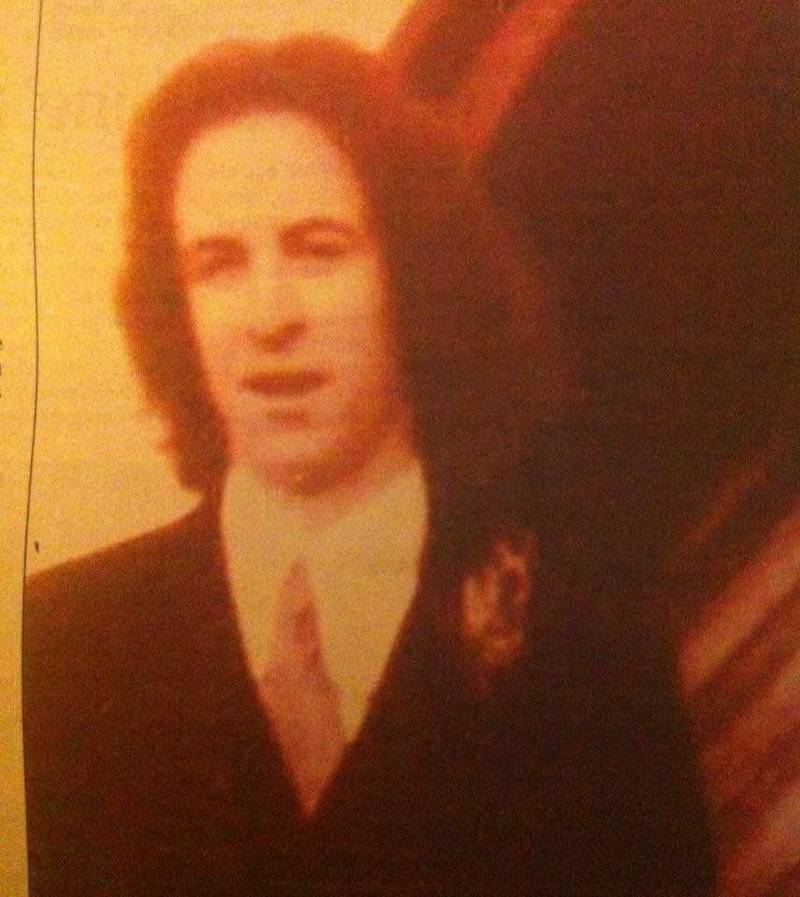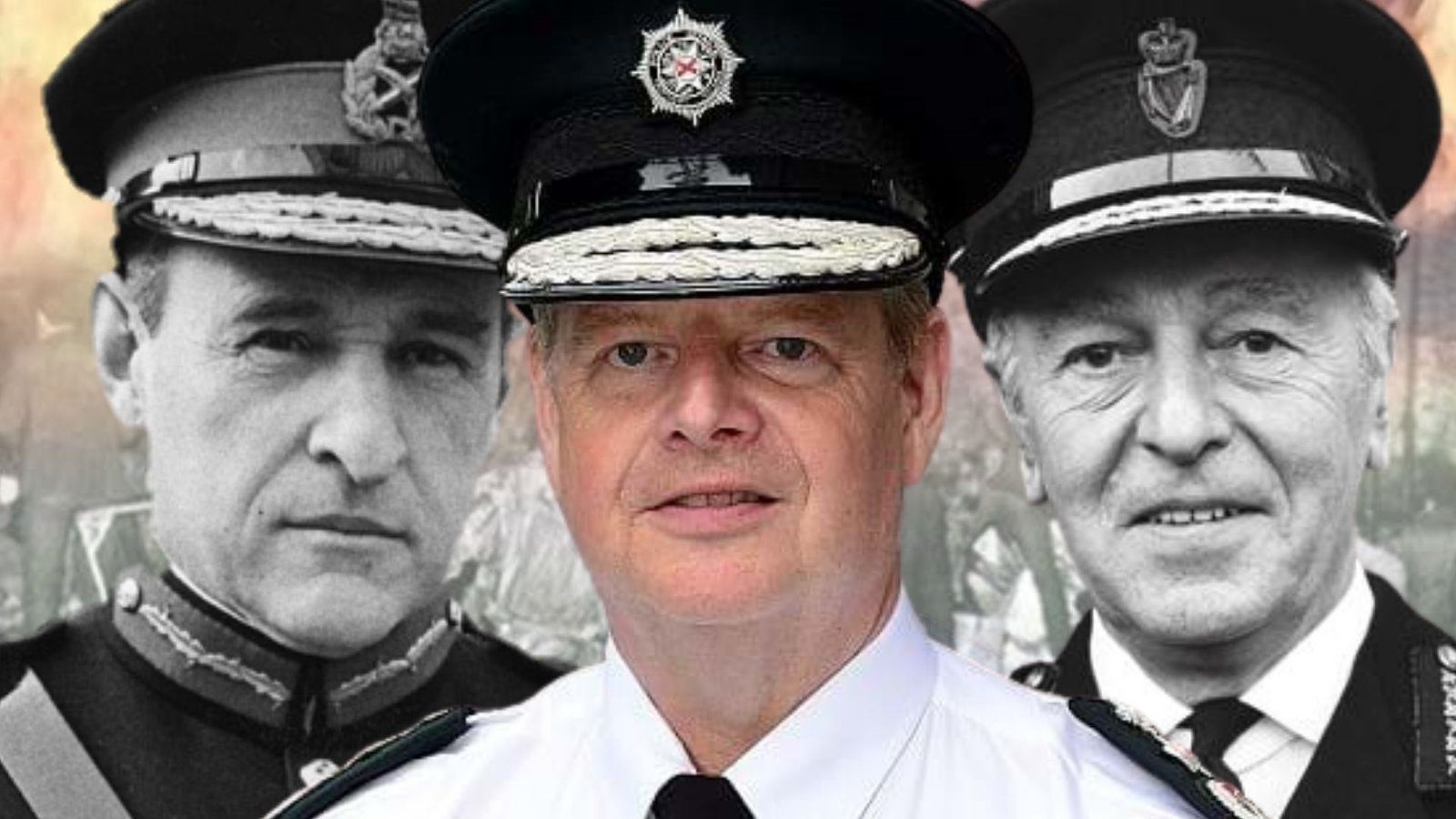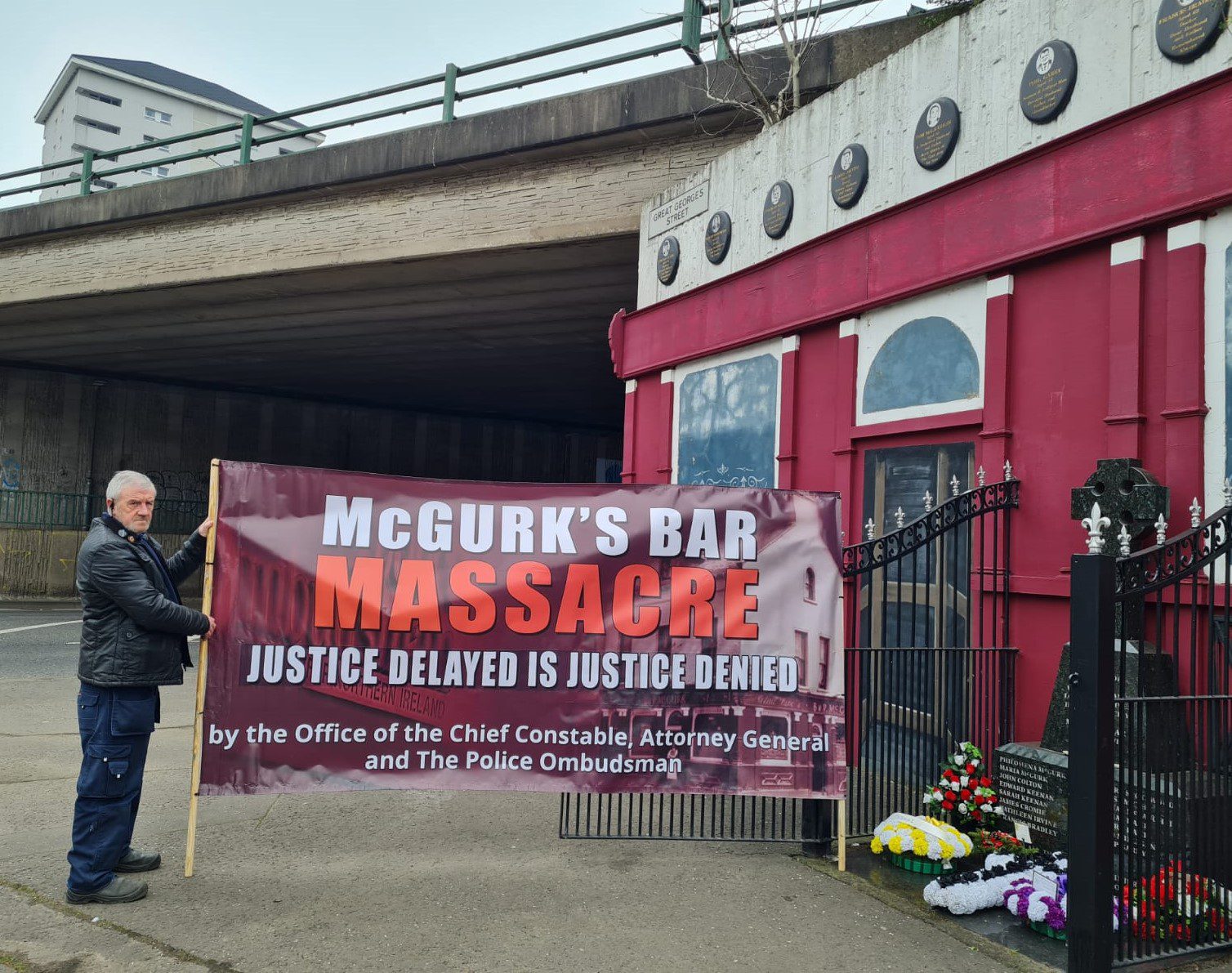Today (13th October 2024) marks the 50th anniversary of the murder of Ardoyne Gael, Ciarán Murphy.
Ciarán was 17 years of age when he was abducted and murdered by a gang of Loyalist extremists that included several British state agents. This article is printed with the permission of his nephew, Niall Ó Murchú. It featured in our book, The McGurk's Bar Bombing.
Close to midnight on Saturday 12th October 1974, Ciarán Murphy was walking home alone after a night out with friends. He only had a short 10 minute walk from the Antrim Road to the top of the Cliftonville Road to cover. Nevertheless, Ciarán was walking home along what was called at that time, and a long time since, “Murder Mile”[1]. It was so-called as this short route was a favourite hunting ground for Loyalists on the prowl for easy Catholic civilian targets. Dozens of Catholics were shot dead on the road or bundled into the back of cars to be tortured, killed and dumped elsewhere. Loyalists seemed to be able to hunt along here without hindrance or fear despite intense military and police attention focused on the local Catholic areas of New Lodge, Cliftonville, Oldpark and Ardoyne. It is no coincidence that the neighbouring British military installation of Girdwood Barracks was home to 10 UDR which archives[2], discovered by the Pat Finucane Centre, have proved were heavily infiltrated by Loyalist extremists although the authorities turned a blind eye.
As Ciarán walked up the Cliftonville Road, a Ford Corsair rolled up beside him with three strangers inside who asked if he wanted a lift home. Ciarán had had a few drinks and was about to accept a lift until he realized he was in grave danger. It was too late. One of the men, Aubrey Tarr, had gotten out and blocked Ciarán’s escape. The teenager was bundled and dragged into the back seat between Tarr and another Loyalist (with whom Tarr would kill other Catholics over the coming weeks) whilst the owner of the car drove. These men were never charged for this crime although their names are confirmed on police files. As I do not want to impact upon future court proceedings or litigation by Ciarán’s family, I will call the other man in the backseat who held Ciarán, Mr A, and the car owner, Mr B. We were able to cross-reference the car-owner’s name with scant details regarding his charge history within the Historical Enquiries Team (HET) report, information from the family and newspaper archives[3]. Tarr’s other accomplice would have been obvious from his charge sheet, if the family did not already have his details, as he was a bomber responsible for multiple murders of civilians. So unconcerned were these three that they would be stopped, they had decided to go hunting for a Taig[4] at the end of a heavy drinking session and in a car that was personally owned by Mr. B.
They drove Ciarán first to a Loyalist sibín[5] close-by in Heathfield, just off the Cliftonville Road, in the Torrens area which at that time was a Protestant enclave. Either they wanted to take Ciarán into the bar to “romper” him, to get a weapon or to tell their buddies there that they had a Taig in the back seat. “Rompering” was a particular gruesome death which entailed snatching a Catholic and dragging him to a place where they could take their time killing him. Usually, this meant the local Loyalist drinking den in view of anyone who happened to be there. The victim would be tortured, sometimes amongst a bar full of people, for hours on end. Brutalizing the victim this way blooded and bonded everyone within the group. Smattered in gore, vomit and their own bodily functions, victims were de-humanized before their terrible death.
Ciarán’s family were led to believe by the RUC that this is how he met his fate and they have carried this for two generations. The Historical Enquiries Team (HET) confirmed that this was not the case, giving the family small mercy in the end. The gang was ordered to leave that night and I have learned that Ciarán’s abductors were disciplined soon afterwards, though not for what they did to an innocent Catholic teenager. They got slapped about a bit for coming to this bar with Ciarán in the back of a car, whilst they were drunk, and shouting they had a Taig. Instead, they drove to Silverstream Road over a mile away to another drinking den called the 42 Club. Tarr left them for a few minutes as his home was close by and he wanted to tell his wife not to expect him home for a time[6]. When he returned, another Loyalist had joined them. I will call this man, Mr C.
He is a very well-known UDA killer who has enjoyed a prison-free career even though he was operating with many of the conflict’s most cut-throat and heavily infiltrated gangs. He began his paramilitary career with a close family member, Ned McCreery, in East Belfast in the early 1970s. The McCreery Gang gained notoriety as being among the first sectarian killers to romper their victims, even burning a cross on the back of one victim, Patrick Benstead.
McCreery and Mr C ran it with the help of Albert “Ginger” Baker, who had “deserted” from the British Army in July 1971. Baker was actually being run by British military intelligence and was deployed onto the streets of Belfast just before internment was introduced. Baker ended up testifying against the gang he led in February 1974 but the court case floundered and the defendants were released. Three, including Ned McCreery, were lifted outside the courthouse and interned. Mr C escaped completely and a few months later was involved in Ciarán Murphy’s death.
After Aubrey Tarr returned from his home, they drove up to the back of Tyndale Community Centre and waited there for about ten minutes whilst Mr C went to the house of the local UDA quartermaster to retrieve a gun. We can only imagine how afraid the 17-year-old was behind the community hall, freezing and surrounded by the Loyalists. They slapped Ciarán about, cut him a little and taunted him as they waited. They even stole his jewellery and what little change he had in his pockets. After Mr C returned with a gun, they drove up the hill through the pitch black of night, winding along the Horse-Shoe Bend overlooking Belfast and onto Daddystown Lane, close to a quarry. They bundled Ciarán out of the car and executed him there and then, leaving his lifeless body sprawled in the mud.
To distance the UVF from the killing, as the organisation had actually been legalized that April[7], the group at that time was using cover names such as Protestant Action Group, Ulster Protestant Action and Protestant Action Force. Nevertheless, before light the following morning, Tarr returned with the owner of the Ford Corsair to leave his own macabre calling card. He scrawled the word “POPE” in big, chalk letters on the road. Tarr had the ironic nickname “Pope” as “he liked Catholics so much”[8] and this ought to have led the RUC to other killings where Tarr wanted to leave his mark.
As they drove away, the car was actually seen by two members of the Royal Military Police (RMP) who were apparently coming off-shift[9]. They were highly suspicious as the car was driving without lights in the dark but they chose not to stop it nor investigate when it rolled to a halt in a nearby driveway. The RMPs later told the RUC that they did not even get a registration number. We may reason that the RMPs quite simply bottled it through fear even though they were armed and it was their duty to investigate and report on such highly suspicious activity. This may be a believable human response and failure. Nevertheless, I find it incredible that seasoned RMPs – one was a Lance Corporal and the other a Sergeant – could not take registration details and report it immediately. If they did not, they should have been disciplined. What is more believable, if the car was not intercepted, is that the details were indeed radioed or reported and the owner of the car identified. The authorities would have had these even before Ciarán’s body was discovered.
Ciarán Murphy’s nephew, Níall, was just four weeks-old when his young uncle was killed. He kindly shared the extensive research that he and his father, Pat, have built up over the years and even allowed me to sit on important meetings with the Historical Enquiries Team reviewing Ciarán’s case. He knew that some of my research up until the late 70s would overlap with his family’s work. Sure enough the arrest of Robert James Campbell ties in with RUC “housekeeping” of Loyalist units in the summer of 1977, including the younger members of Campbell’s team involved in the death of Ciarán Murphy. Indeed, the RUC investigation into Ciarán Murphy’s murder perfectly highlights how the management of police agents and information outweighed bringing Loyalist mass murderers to justice even whilst these people continued to kill scores of Catholic civilians. Campbell’s arrest and “interrogation” sits amongst my consideration of this RUC housekeeping.
In 1977 we are led to believe that Tarr alone admitted to involvement in Ciarán’s death although the family have known for some time the names of the others, including the names of who retrieved the gun and from whom[10]. What the family did not know was how Ciarán actually died. Family liaison by the RUC entailed them lying to the Murphy family and telling them that the lad had been rompered and given a terrible death. The family are close relatives of Gerry Adams, the former Sinn Féin leader, and many shared his Republican beliefs. The RUC terrorized the family by telling them that Ciarán had suffered much more than he had done however terrible his death was anyhow. This was only cleared up by the HET cold case officers over 36 years later.
Details of the vehicle used in Ciarán’s abduction and murder ought to have brought police to the door of Mr B, the car owner, as intelligence from an anonymous source[11] was fed through the system that it was definitely a Ford Corsair used. This information may have been precipitated by the RMPs reporting the details of the car they saw driving without lights although they told investigating officers that they did not take nor report these. This information alone should have directed them immediately to known UVF members who also drove this make of car locally. No doubt Mr B would be highlighted as a key suspect and we could have expected that his car would be impounded as evidence.
This Ford Corsair is crucial as Tarr admits in 1977 that it was “being driven by its owner”[12]. By the time of Tarr’s admission, the names of the other Loyalists involved in Ciarán’s murder were well known to the RUC and they had indeed arrested them and questioned them about it in November 1975. They were all released without charge, even though Tarr fitted the description of the man seen bundling Ciarán into the car and Mr B admitted to owning a Ford Corsair at the time. Interview records no longer exist to explain their release but an investigating RUC detective writes in an internal report in December that “no evidence was obtained to connect any of them with this crime and all were subsequently released” [13]. There was evidence, though, but this was never tested – the Ford Corsair car. Police were aware that young Ciarán had been very ill in the back of the car[14], no doubt due to being roughed up and being very afraid. When the suspects are arrested a year later, the RUC do nothing about the car. It no longer belonged to the owner being questioned but was easily found – it had been sold to the man’s uncle who was high up in the UVF’s command structure and had the initials KH. Reading the Belfast Commission files sourced by Ciarán’s family, it is obvious that Tarr admits to much more than is actually contained in his final confession. He names KH and says he fears what he will do to his wife if he finds out he is talking.
Nevertheless, talk he does. Chief Inspector J. Moore records that Tarr tells interviewing officers that he had been sworn in by one of the Spence brothers in a named pub in the Mountainview area of the Shankill Road in 1970 after he came out of prison. Tarr’s criminal record dated back to 1965 and included sentences for assault, burglary and a litany of driving offences. He tells Chief Inspector Moore that he had been brought in by James Irvine as “a car man”. Suspiciously, even though he had been arrested for serious car crime after he joined the UVF, he only ever received suspended sentences in the early 1970s until he was sent down for murder. His custodial sentences stopped after he joined the UVF. Tarr has much more to tell, though, as redacted notes by Detective Constable John McGahan record “Tarr named other members of Silverstream UVF as…[names blanked – author’s note] He told us all of those named had been in his team”. Tarr’s confession, transcribed by the RUC and signed by him, tells a different story altogether:
“When I came out of jail in 1970, I was brought into the UVF by a man I don’t want to name as Transport Officer to get cars for jobs”
“By a man I don’t want to name” is a common refrain in these documents although Commission records of RUC notes differ.
It is bad enough that the Ford Corsair car is ignored as vital evidence (as in the case of the “car used in explosion Gt. George St”[15] after the McGurk’s Bar Massacre) but the RUC have a chance to redeem themselves after the confession by Aubrey Tarr. He admits that the Ford Corsair was being driven by its owner which immediately fingered Mr B. This man is arrested on the 2nd August 1977 but again nothing is done about him or the car. By this time it has been sold on to leading Loyalist, John Bingham. In RUC files there is a signed search warrant for two of Bingham’s properties but no record of RUC attempts to locate the Ford Corsair for examination which was probably sitting outside the house. It is obvious to Ciarán’s family that the killers were allowed to go free to protect at least one RUC source and this will feature when the Murphy family push for the arrest of the surviving killers. They believe that the real confessions of Tarr and Mr A, the convicted bomber (who was never charged for Ciarán’s murder) were suppressed as they corroborated each other and named the other two suspects, namely the owner of the Corsair car, Mr B and UDA leader, Mr C. Therefore, they will be pressing for full disclosure of RUC notes to flush the real confessions as they state bluntly that the police are managing information to protect potentially two assets who were never to serve any time for conflict-related convictions. Pat Murphy had just turned 20 when he had to identify his younger brother’s body on a mortuary slab. Of those who killed him, he says simply:
“It is not a question of whether an agent of the State was involved in Ciarán’s murder. It is a question of whether there was more than one”
The HET, of course, neither confirm nor deny this. What the HET did confirm privately was the names of those involved and the importance of the car in our own investigation.
The management of agents could be dirtier still. John Bingham had a UVF career that spanned 15 years and, by repute, was responsible for the deaths of many Catholic civilians (McKittrick, Kelters, Feeney and Thornton, 2001, p. 1049). He himself was killed by an IRA unit on September 14th 1986 after being set up by State agent and fellow Loyalist, UDA leader, Jim Craig. Craig’s right-hand man at the time was none other than Mr C who also played a key role in the set-up. By this time Craig and Mr C were more interested in money from racketeering and drugs although they still ran a sectarian war on the side. If fellow Loyalists encroached on their territory they arranged that their details fell into the hands of the IRA. Republic sources allege that it was Mr C who was held as a “hostage” by the IRA until their active service unit had carried out the hit on Shankill Butcher, Lenny Murphy, in November 1982.
Mr C also led an infamous UDA gang called the “Window Cleaner Gang” who terrorized the North Belfast community at the same time as the Shankill Butchers. They got their name as they used ladders to help them climb in through windows in the dead of night before executing their victims in bed. When I was young, this was the stuff of nightmares and provided ample reason to keep windows shut tight at night. Innocent victims included Níall O’ Neill on 22nd January 1976 and Peter Johnston in September of that year. It was reported in the Newsletter two days after Níall O’ Neill’s death that his parents had to release “a statement in defence of their dead son” as they were deeply distressed by RUC reports which intimated he was involved in an explosion nine days previously which had killed four people. The bomb in North Arcade, central Belfast, had exploded as it was being assembled by IRA members Rosemary Bleakley and Martin McDonagh, killing them and civilians, Ian Gallagher and Mary Dornan. Police sources were quoted as saying Níall O’ Neill had suspiciously left work early after the blast and “that his exact whereabouts have not since been known to detectives”[16]. At the inquest, the RUC back-tracked on their black propaganda when questioned by a solicitor.
In October, the RUC forced confessions for the Peter Johnston slaying out of Protestant school boys, Robert Hindes and Richard Hanna, who were only 14 and 15 years of age respectively. It transpired later, of course, that they were totally innocent but they had already spent nine years in prison before their release on licence. When their appeals finally came before the Court of Appeal in 2005, blatant inconsistencies in the RUC’s handling of the case was unearthed, including the suppression of evidence, and the judges ruled unanimously that the pair had been victims of a massive miscarriage of justice. By that time a greater tragedy had occurred as Richard Hanna, no doubt traumatized by the life that was snatched from him, had drunk himself to death, dying hours before his appeal was heard. Contrariwise, Mr C has not served any time whatsoever for a conflict-related prosecution and had led a charmed existence until 1991 when he was shot and left for dead by members of his own organisation in a wrangle over drugs territory. The shooter was another RUC Special Branch agent, Ken Barrett[17]. When he was well enough to travel, Mr C fled to Britain and continued to ply his trade of drug dealing and extreme violence. He has since had to flee from there to Spain’s Costa del Sol after a botched gangland hit.
The UDA gun which was retrieved by Mr C and used to kill Ciarán Murphy in 1974, matched the ballistics of one used in the sectarian murder of David White on 3rd December. The killers had entered through a back window and shot the man as he lay in bed, using the exact modus operandi as the Window Cleaners three years previously. From our discussions with the HET, though, it was apparent that they had not made this link so the Murphy family awaited the cold case officers informing the White family.
If new evidence was required to make arrests in these cold case investigations, this should have been it but, of course, it was not as Mr B and Mr C have escaped justice for over 50 years and remain protected by the British state.
References
[1] Murder Mile was from the bottom of the New Lodge Road to the top of the Cliftonville Road.
[2] PRO: AUS (GS) 95/78, UDR Irregularities
[3] The owner of the car was arrested in the swoop along with Tarr and other members of Campbell’s platoon and charged with handling a letter-bomb. He was acquitted eventually even though there was quite damning fingerprint evidence against him.
[4] ‘Taig’ is a derogatory name used for Irish Catholics since the Plantation. It was a variation ‘Tadhg’ which was a popular Irish name at the time. Its modern day equivalent would be calling an Irish person “Paddy” although this would not have the same historical venom.
[5] The English variation of the Irish word for unlicensed premises is shebeen.
[6] This is referenced in PRONI files. Tarr does not confess to the excuse he gave his wife and the RUC do not query whether she was told the real reason or not. We may wonder whether she was arrested to find out too.
[7] The month after it was legalized, the UVF exploded bombs in Dublin and Monaghan on 17th May 1974, killing 33 and wounding nearly 300. It was the greatest death and casualty rate on a single day during throughout the Troubles. The UVF was proscribed again a year and a half later on 3rd October 1975 after they had killed dozens more.
[8] This is from an interview with Níall Murphy, nephew of Ciarán, in August 2011. It was the family who provided this information to the HET – the HET was unaware of Tarr’s nickname.
[9] Source: Historical Enquiries Team
[10] Local sources allege that the man who supplied the gun to Mr C had the nickname, “Shakey”.
[11] Historical Enquiries Team, Review Summary Report Concerning the Death of Ciarán Gerard Murphy, 2011, pp. 16-17
[12] Historical Enquiries Team, Review Summary Report Concerning the Death of Ciarán Gerard Murphy, 2011, p. 21
[13] Historical Enquiries Team, Review Summary Report Concerning the Death of Ciarán Gerard Murphy, 2011, p. 20
[14] PRONI Belfast Commission File
[15] Police Ombudsman, 2011, p.22
[16] Newsletter, Saturday 24th January, 1976
[17] Barrett was convicted for his role in the murder of Human Rights lawyer, Pat Finucane, an act, as admitted by the British Prime Minister, David Cameron, in 2011, which was perpetrated in collusion with the British State.

